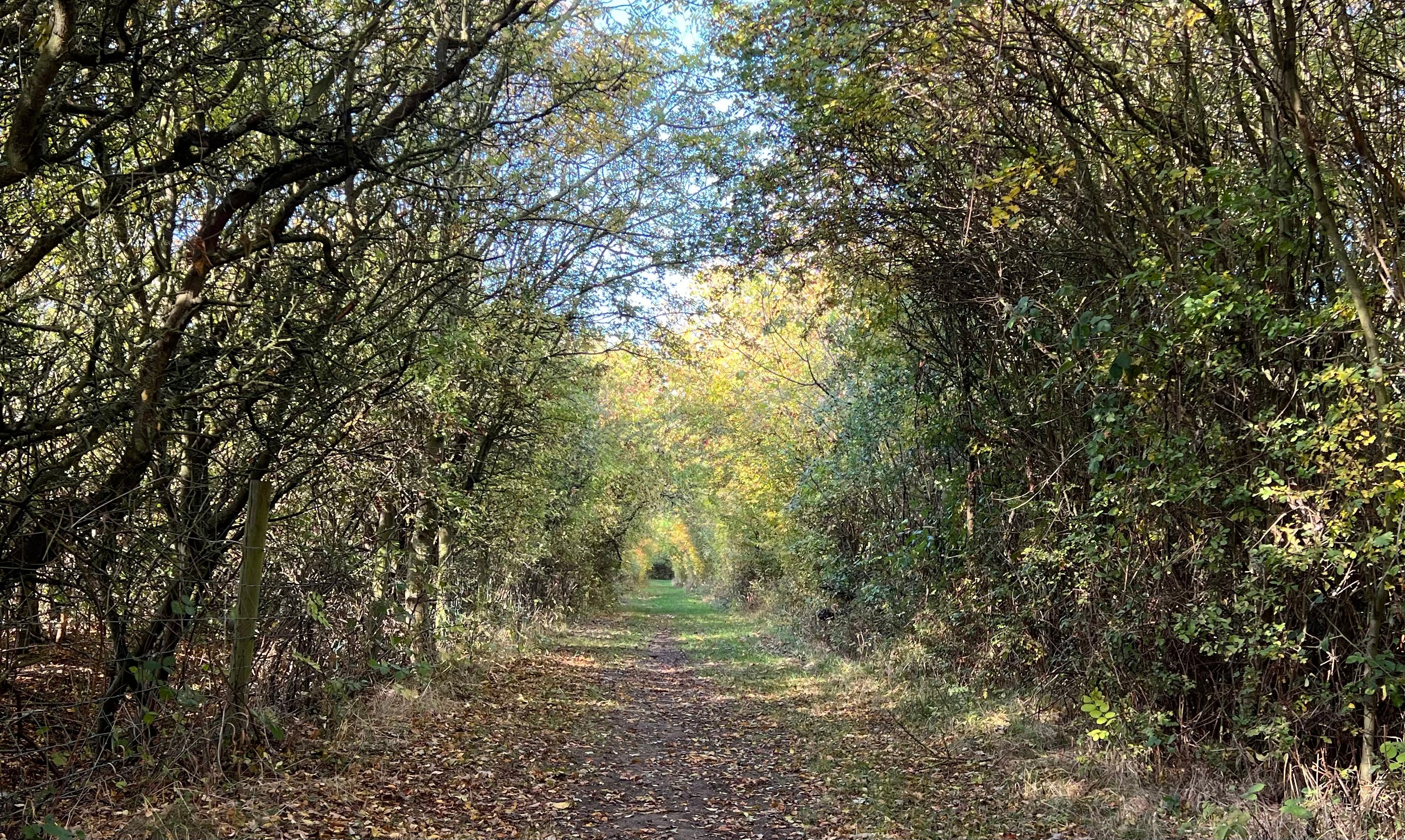
The Sunken Forest
Painted in the shelter of Epping Forest - a series where darkness becomes safety.
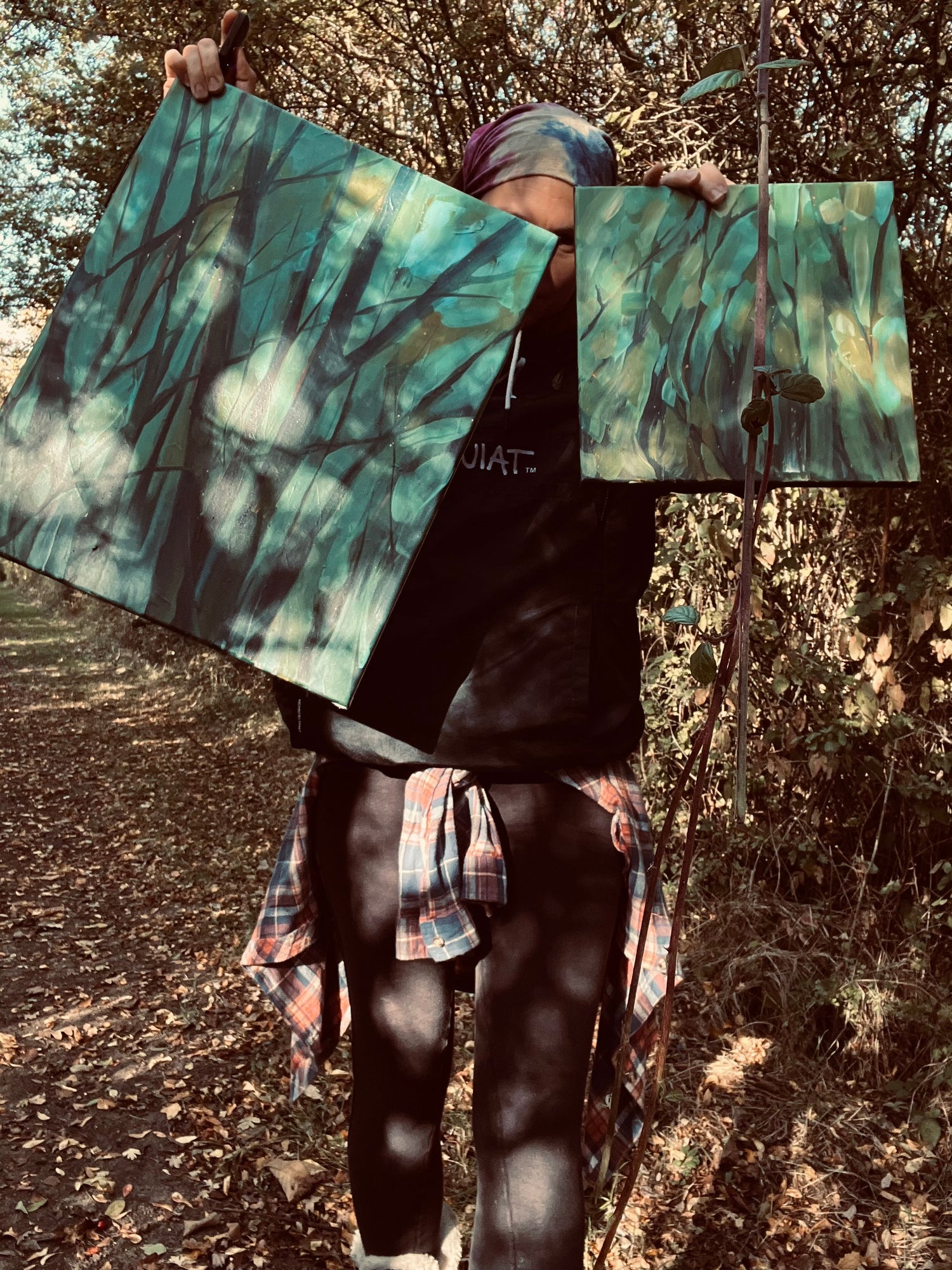
Collection Summary
At the edge of Epping Forest lies a place known as The Sunken Forest — a hollow alive with deer, foxes, and the quiet rhythm of trees. These paintings were made in the turning months of autumn, when the air slows and the world softens.
In this series, darkness becomes a form of safety. The deep greens and ochres echo nature’s own way of calming the body, reminding us that stillness is not absence but protection. Each work traces the quiet threshold between fear and refuge, between what must change and what endures.
Because sometimes the safest place to be is the one we let grow dark.
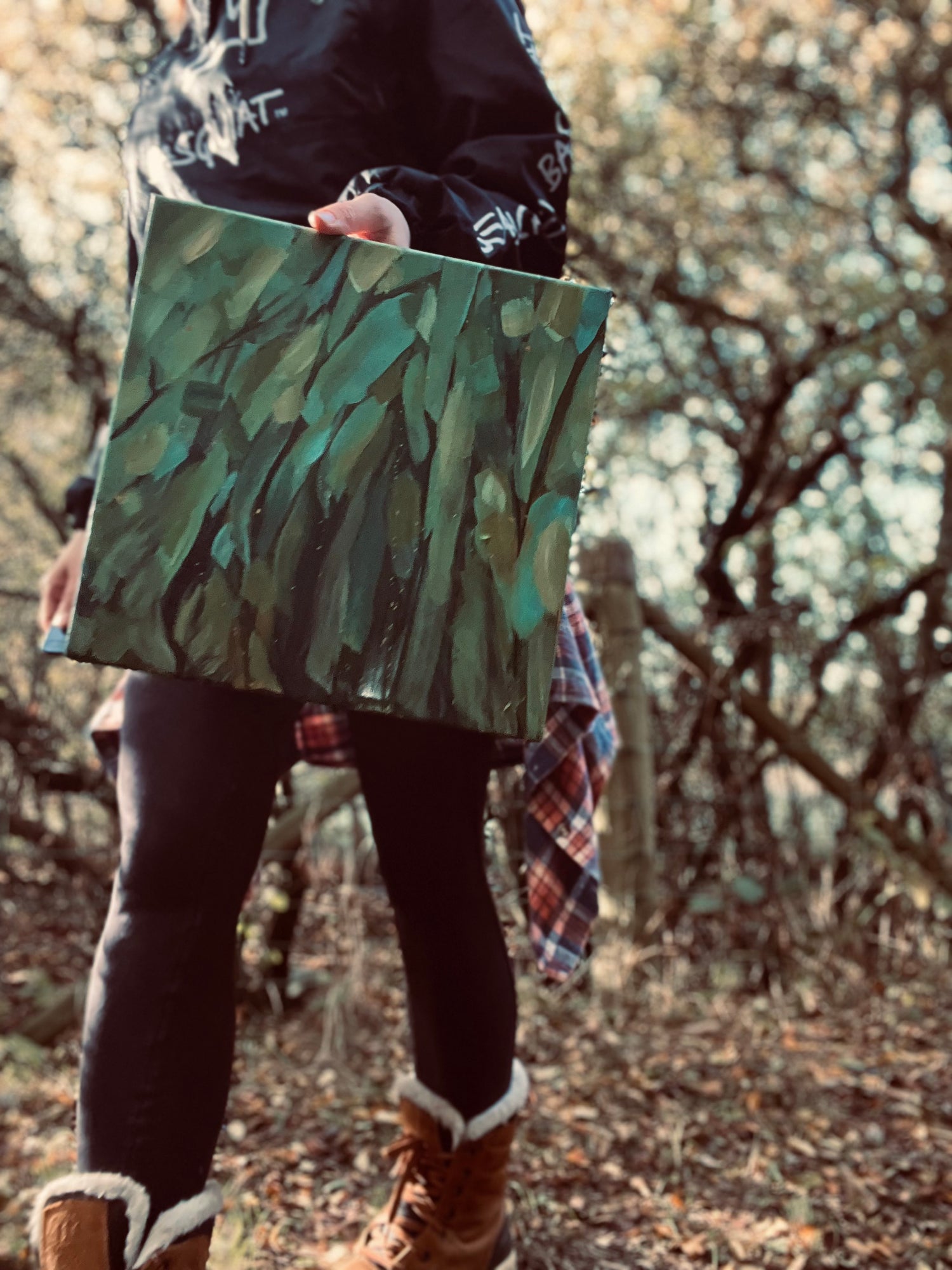
The Sunken Forest
Edge of the Hollow
At the boundary where woodland gives way to open air, Edge of the Hollow explores the quiet tension between safety and exposure. The brushwork moves outward, like wind through wet leaves, carrying both warmth and distance. It reflects that threshold we all inhabit - between retreat and return, between the instinct to hide and the impulse to step forward again.
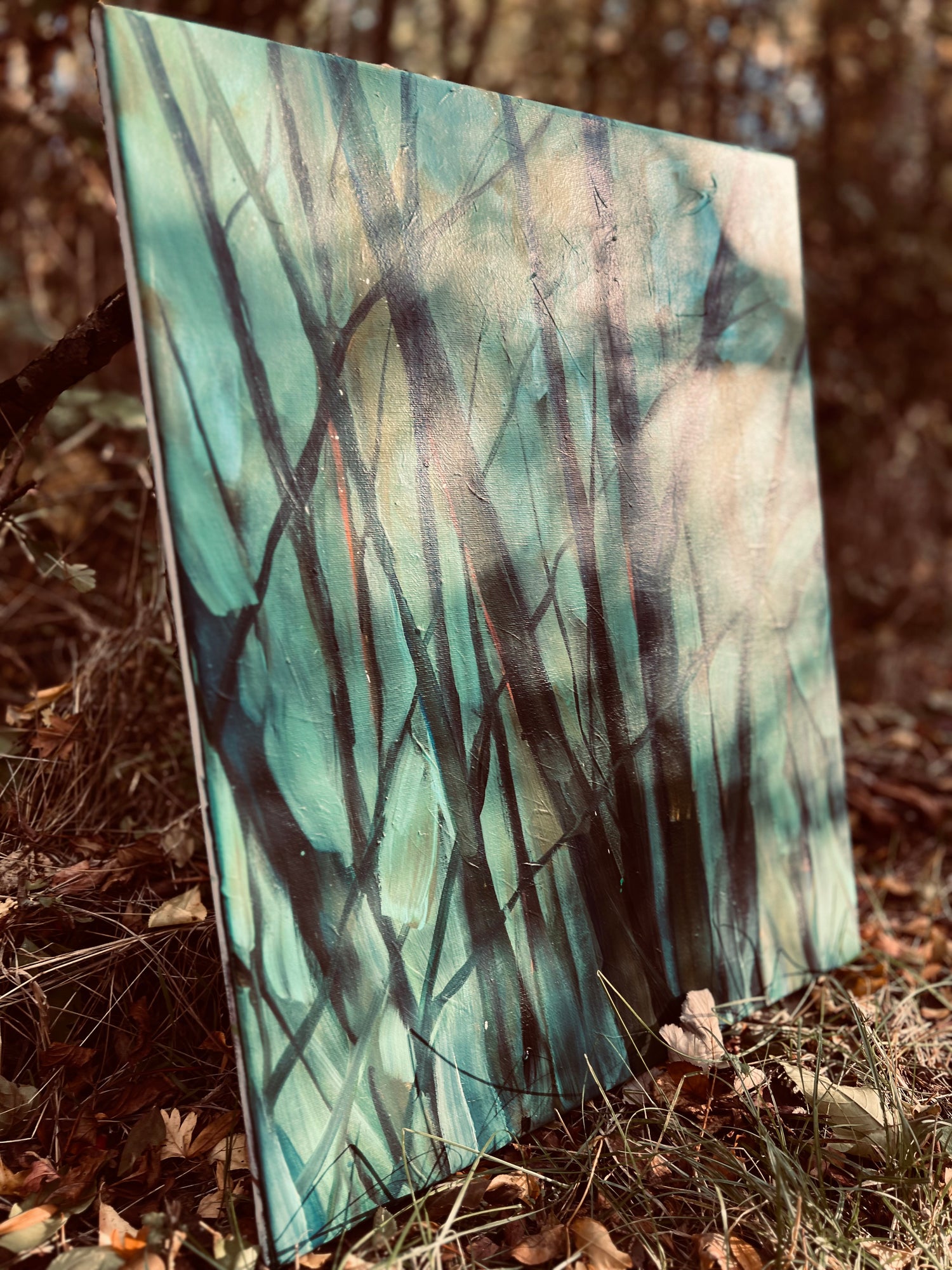
The Sunken Forest
Rainlight
Painted beneath a clearing sky, Rainlight captures the moment when the forest breathes again after rain. Layers of deep green and ochre soften into pale reflections, suggesting both renewal and release. The light is not bright but alive — filtered, diffused, protective. Like much of The Sunken Forest series, it speaks of shelter and resilience, of finding calm in the shift between weather and stillness.
The Sunken Forest
At the edge of Epping Forest lies a place known as The Sunken Forest — a hollow alive with deer, foxes, and the quiet rhythm of trees. These paintings were made in the turning months of autumn, when the air slows and the world softens.
In this series, darkness becomes a form of safety. The deep greens and ochres echo nature’s own way of calming the body, reminding us that stillness is not absence but protection. Each work traces the quiet threshold between fear and refuge, between what must change and what endures.
Because sometimes the safest place to be is the one we let grow dark.
-

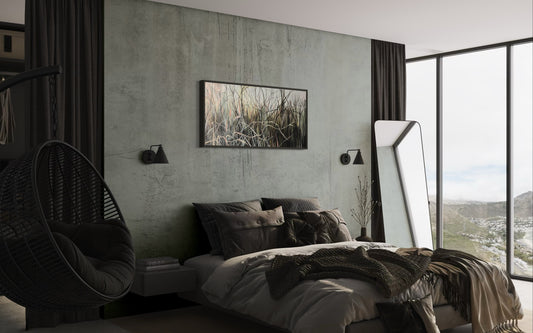 SOLD
SOLDBefore the Hollow
Regular price £1,595.00 GBPRegular priceUnit price / per -
 At Gallery
At GalleryFear and other feelings
Regular price £1,295.00 GBPRegular priceUnit price / per -

 At Gallery
At GalleryAutumn's Voice
Regular price £795.00 GBPRegular priceUnit price / per -

 At Gallery
At GalleryEdge of the Hollow
Regular price £395.00 GBPRegular priceUnit price / per
Collection Story
The Sunken Forest
At the edge of my home lies a place known locally as The Sunken Forest — a hollow on the borders of Epping Forest where alder, beech, and hawthorn lean close together, and the ground hums with quiet life. Pheasants stir in the undergrowth. Muntjac deer move like ghosts through the mist. There are bats at dusk, the scrape of fox claws on bark, the slow pulse of wings above the canopy.
It is here that this collection began: a retreat into the green shadow and shelter of the living world. These paintings were made as the season turned, when summer’s brightness gave way to the damp calm of autumn — that in-between time when the air feels heavy with memory and change.
We often speak of darkness as something to fear, but in nature, it is also a kind of safety. Shadows soften edges. Stillness hides what must endure. In the wild, to be unseen is to survive. For us, too, there is comfort in dimness — in that slow fade of light that signals it is time to rest, to gather, to endure what winter brings.
Psychologists have found that the palette of autumn — the russet, ochre, and deep green of turning leaves — lowers heart rate and eases the nervous system into calm familiarity. These colours are biological cues for safety, a reminder that the cycle continues. What we mistake for decay is often a form of restoration: the world readying itself to begin again.
In The Sunken Forest, that rhythm becomes both subject and method. These paintings trace the threshold between fear and refuge, showing how change, grief, and uncertainty can become part of a wider pattern — not something to overcome, but to inhabit. Beneath their layers of paint and movement, there is a quiet pull toward protection and renewal.
I think of them as interiors disguised as landscapes: spaces to hide, to breathe, to listen. They are the visual echo of standing in the woods after rain, when the air feels close and kind and everything unnecessary has fallen away.
Because darkness is not always something to escape. Sometimes, it is where we are finally safe enough to stay.









